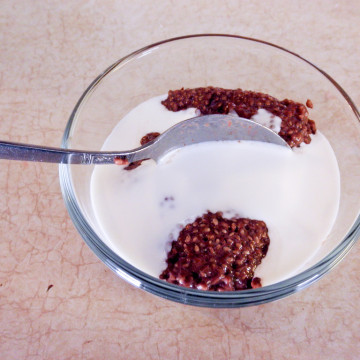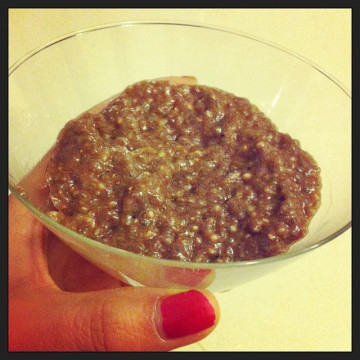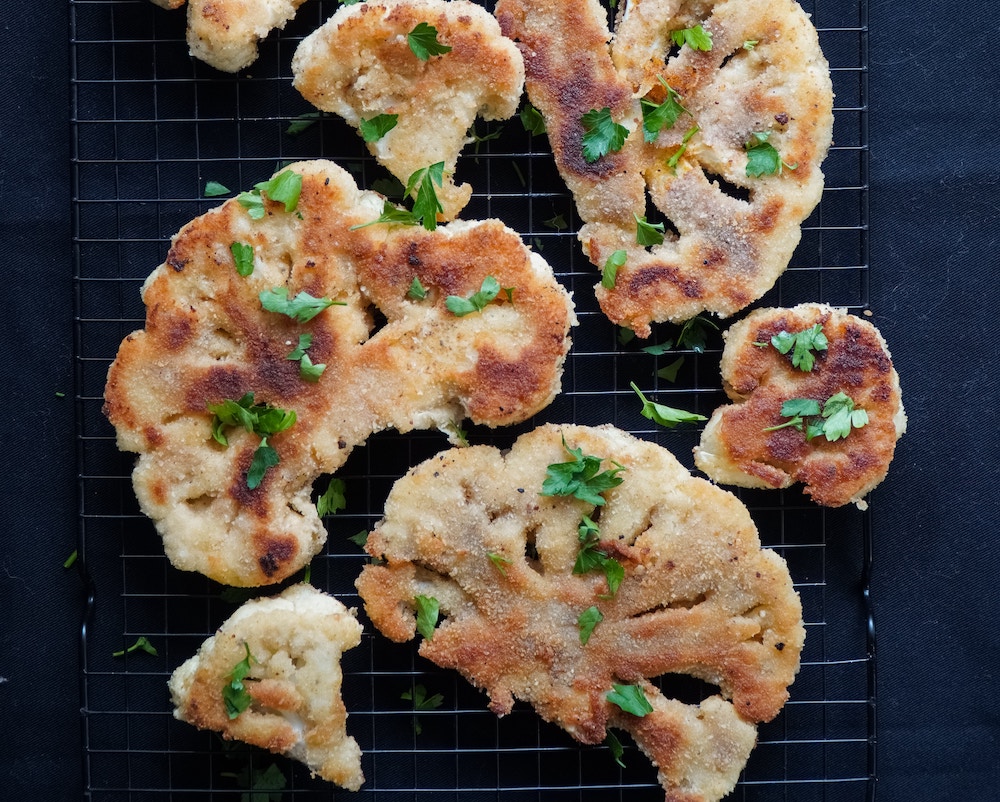Today, a reader asks:
I am writing an article about the growing trend and benefits of chia seeds so would like to get some sources to support it. I thought you would be a good person to ask!
1. Why do you think there has been a sudden chia seed renaissance, because they have been around for a very long time?
2. What is the best way to add chia seeds to your diet?
3. What are the benefits of eating chia seeds?
Thank you for your time, this will really help me out.
–J from Bath, England
Dear J,
As you note, chia has been eaten by humans from around 3,500 BCE and was a major staple of both the Mayans and the Aztecs, who believed that just a spoonful of the tiny seeds could give sustained energy for a day. But its recent popularity is the result of growing body of research on natural foods, and especially the increasing awareness of the importance of Omega-3 fatty acids. After the low-fat movement of the 90’s, the early 2000’s brought the idea that some fats are actually good for you. At the same time, consumer tastes were broadening, and becoming ever more cosmopolitan. Chia seeds drew attention as an excellent source of Omega-3s, and became one of the hottest superfood imports from Latin America in the past ~10 years, along with quinoa and acai berries.
An ounce of chia seeds contain: 42% of your daily fiber, 18% of calcium, and 4 g of protein. It’s a great source of phosphorus, zinc, and manganese, and has whopping 4915 mg of Omega-3, along with 1620 mg of Omega-6. This high Omega-3 to Omega-6 ratio is important because in Western diets, we get almost 1 (Omega-3) to 16 (Omega-6)–but the ratio we’ve consumed over millennia is close to 1 to 1. Studies show that low Omega-3 to Omega-6 ratio is associated with cardiovascular diseases, inflammation, and cancer. Along with these crucial Omega-3s, chia seeds also boast complete amino acids, so it’s a great protein option for vegans who want to avoid soy. It’s also anti-inflammatory and finally, delicious! So there are tons of reasons to add chia to your healthy eating routine.
There are so many different ways to enjoy chia seeds, all of which are so simple. Unlike flax seeds, chia seeds can be eaten whole, so there is no need to grind them. You can add a spoonful to your morning cereal, oatmeal, smoothie; it’s also a great addition to your muffins and cakes. (How about lemon seed muffins?) When I’m making soup or stew, I like to add a few spoons for that additional nutritional boost. Chia seeds are also a great salad topping.
Another great way is to make your own refreshing spritzer. Chill a pitcher of purified water, some fresh lemon juice, slices of your favorite fruit, and a few tablespoons of chia seeds. You can add seltzer if you like bubbles.
 But my absolute favorite way to enjoy chia seeds is to make puddings! These can be eaten as breakfast, snack, or dessert, depending on how sweet you make them. Just mix a tablespoon or two of chia seeds in some non-dairy milk, and any additions as desired (cocoa powder, maple syrup, cinnamon, vanilla extract, etc) and soak for at least 30 minutes to an hour. (You can even leave it in the fridge overnight). For a decadent treat, top with dark chocolate shavings, coconut flakes, fresh berries, etc.
But my absolute favorite way to enjoy chia seeds is to make puddings! These can be eaten as breakfast, snack, or dessert, depending on how sweet you make them. Just mix a tablespoon or two of chia seeds in some non-dairy milk, and any additions as desired (cocoa powder, maple syrup, cinnamon, vanilla extract, etc) and soak for at least 30 minutes to an hour. (You can even leave it in the fridge overnight). For a decadent treat, top with dark chocolate shavings, coconut flakes, fresh berries, etc.
Good luck on your article! And let us know if you have any other healthy eating questions.
xo Peaceful Dumpling
Got a question about food, life, healthy living, veganism? Email me at [email protected]
Reader Questions: I Need Help Transitioning to Veganism
I Want to Find an Engagement Ring for My Vegan Girlfriend
__
Photo: ljguitar via Flickr; Peaceful Dumpling




